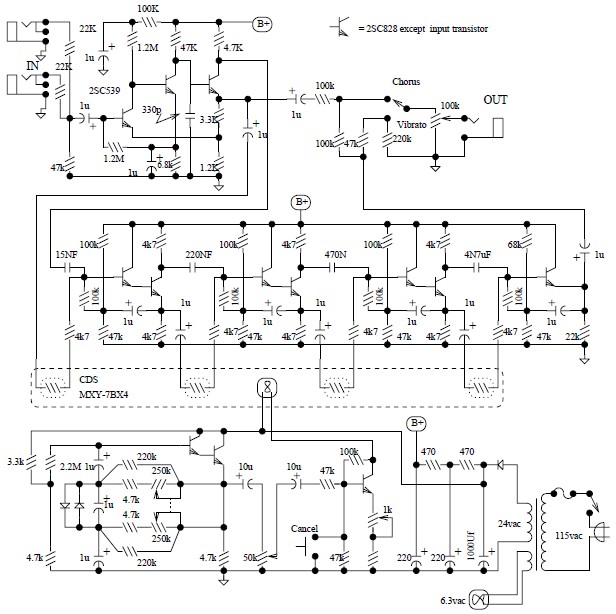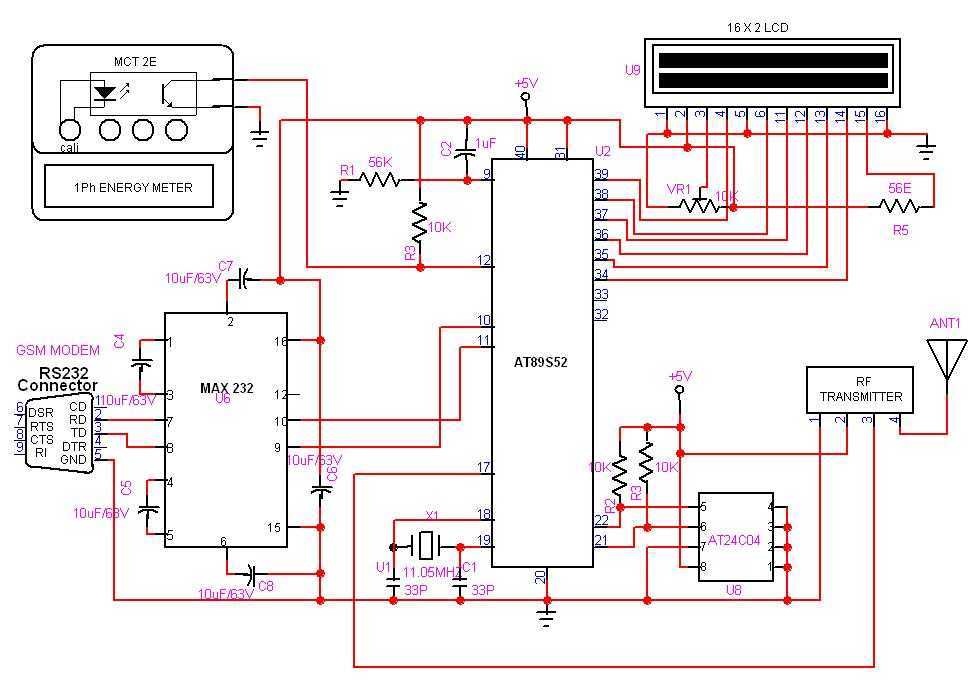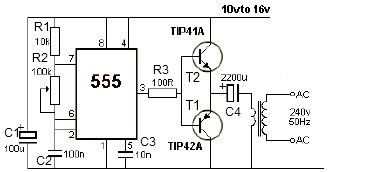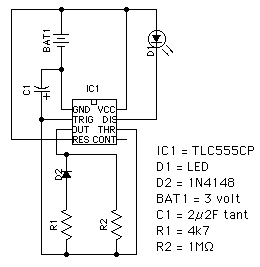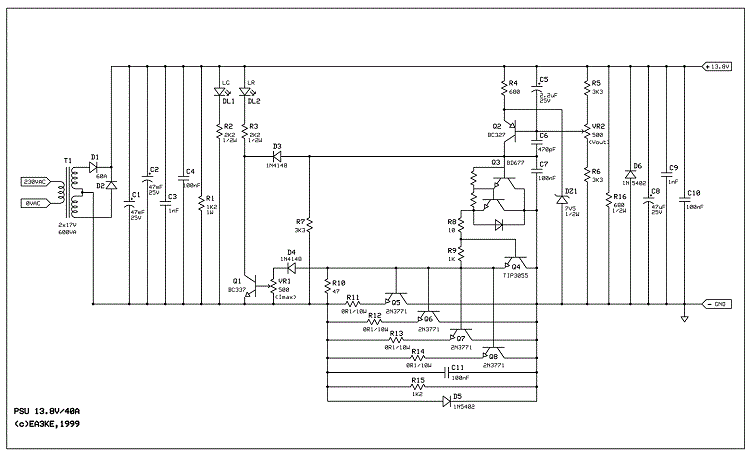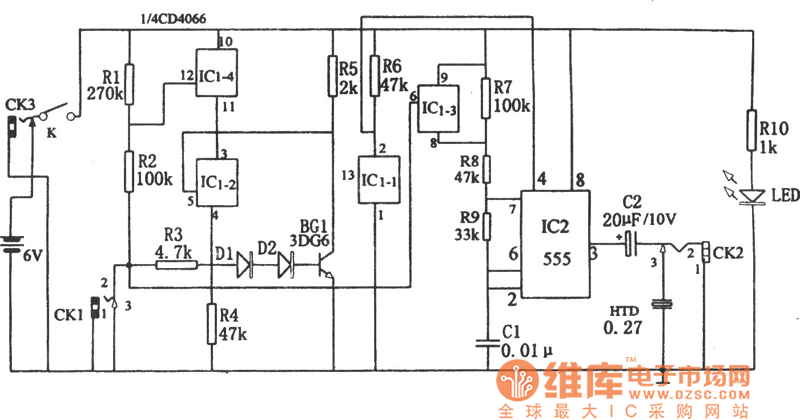
Audio Distortion Meter Circuit with Diagram
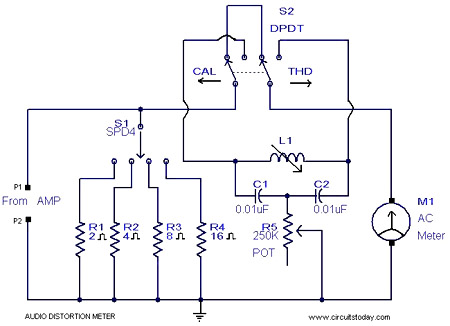
This is a simple 1 kHz audio distortion meter designed to measure the Total Harmonic Distortion (THD) on any load at any output power. The circuit allows for the selection of load impedances of 2, 4, 8, or 16 Ohms. It operates by filtering the 1 kHz fundamental signal using a notch filter consisting of components L1, C2, C1, and R1. With some time and calculation, it is possible to accurately determine the THD of an amplifier in a straightforward manner. To use the meter, feed a 1 kHz signal from a signal generator into the amplifier. If a signal generator is not available, a 1 kHz Colpitts oscillator can be constructed for this purpose.
The audio distortion meter is structured around a notch filter configuration that effectively isolates the fundamental frequency while attenuating harmonic frequencies. The selection of load impedance is facilitated through a switch or jumper settings that connect the appropriate resistive load to the circuit. The notch filter, composed of an inductor (L1) and capacitors (C1 and C2) in conjunction with a resistor (R1), is designed to create a deep attenuation at the 1 kHz frequency. This allows for precise measurement of the THD by comparing the output signal to the input signal.
To implement the circuit, the 1 kHz signal can be generated either by a dedicated signal generator or by constructing a Colpitts oscillator, which utilizes a combination of capacitors and an inductor to produce a stable sine wave output at the desired frequency. The oscillator circuit typically includes a transistor configured in a feedback loop to ensure consistent oscillation.
Once the input signal is fed into the amplifier under test, the output can be connected to a measurement device, such as an oscilloscope or a spectrum analyzer, to analyze the distortion characteristics. The difference between the fundamental frequency and the harmonics will provide a quantitative measure of the THD, which can be calculated using the ratio of the power of the harmonics to the power of the fundamental frequency. This process enables engineers and technicians to evaluate the performance of audio amplifiers and ensure that they meet the required specifications for audio fidelity.Here is a simple 1KHz audio distortion meter that can measure the Total Harmonic Distortion (THD) on any load at any out put power. Here you have the option to select 2, 4, 8 or 16 Ohm loads. The circuit works by filtering the 1 kHz fundamental signal using a notch filter comprising of L1, C2, C1, R1.
With a little time and calculation you can get the c orrect THD of your amplifier in such a simple way. Feed the input of your amplifier a 1KHz signal from a signal generator. If you don`t have a signal generator make a 1 kHz Colpitts oscillator for the purpose. 🔗 External reference
The audio distortion meter is structured around a notch filter configuration that effectively isolates the fundamental frequency while attenuating harmonic frequencies. The selection of load impedance is facilitated through a switch or jumper settings that connect the appropriate resistive load to the circuit. The notch filter, composed of an inductor (L1) and capacitors (C1 and C2) in conjunction with a resistor (R1), is designed to create a deep attenuation at the 1 kHz frequency. This allows for precise measurement of the THD by comparing the output signal to the input signal.
To implement the circuit, the 1 kHz signal can be generated either by a dedicated signal generator or by constructing a Colpitts oscillator, which utilizes a combination of capacitors and an inductor to produce a stable sine wave output at the desired frequency. The oscillator circuit typically includes a transistor configured in a feedback loop to ensure consistent oscillation.
Once the input signal is fed into the amplifier under test, the output can be connected to a measurement device, such as an oscilloscope or a spectrum analyzer, to analyze the distortion characteristics. The difference between the fundamental frequency and the harmonics will provide a quantitative measure of the THD, which can be calculated using the ratio of the power of the harmonics to the power of the fundamental frequency. This process enables engineers and technicians to evaluate the performance of audio amplifiers and ensure that they meet the required specifications for audio fidelity.Here is a simple 1KHz audio distortion meter that can measure the Total Harmonic Distortion (THD) on any load at any out put power. Here you have the option to select 2, 4, 8 or 16 Ohm loads. The circuit works by filtering the 1 kHz fundamental signal using a notch filter comprising of L1, C2, C1, R1.
With a little time and calculation you can get the c orrect THD of your amplifier in such a simple way. Feed the input of your amplifier a 1KHz signal from a signal generator. If you don`t have a signal generator make a 1 kHz Colpitts oscillator for the purpose. 🔗 External reference
